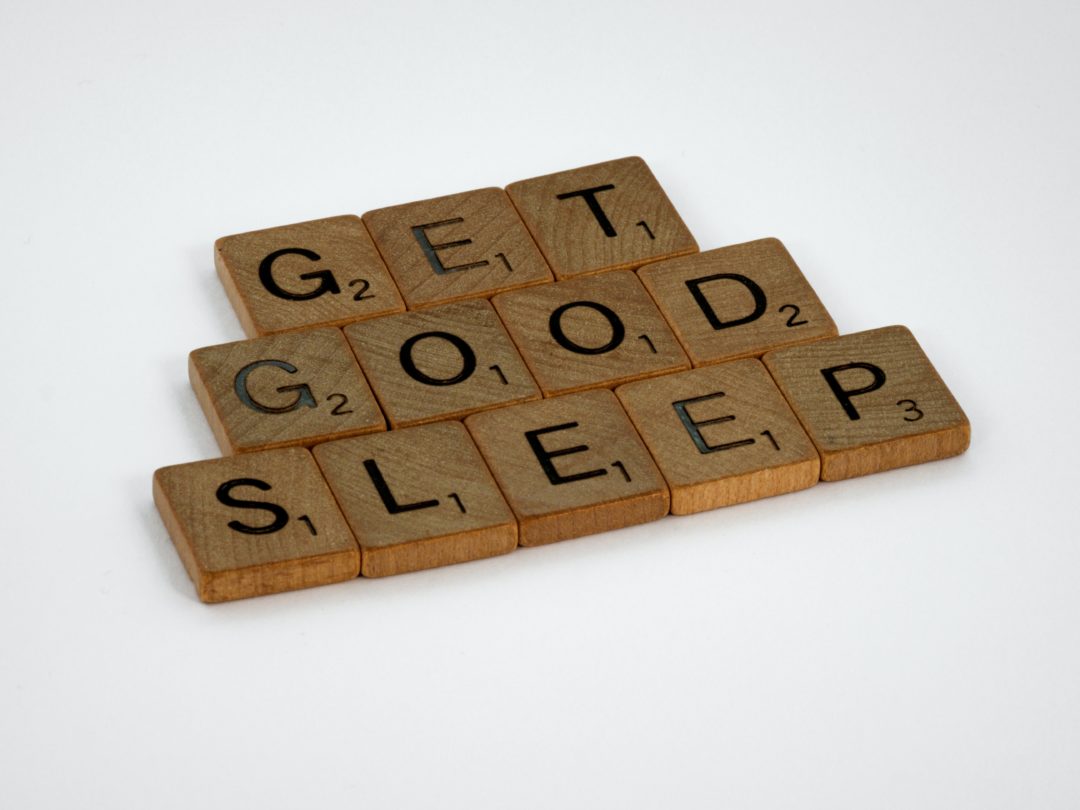Posted on October 25, 2022 by Jenn Zatopek
In my work as a counselor I often see how my clients struggle to sleep well, which is why I created this short blog series on getting good sleep. Sleep training is needed for all us, especially since modern life is dictated by late nights and electronic engagement rather than by the rhythms of nature as it was in the distant past.
Imagine what it was like for our ancestors centuries ago before electricity was invented: people retired to bed as the sun went down, stayed awake for a few hours until falling asleep, woke up around midnight and stayed up for a few hours, and then returned to sleep again for another small section of time. Compressing our sleep into only eight hours is a modern invention, but with guidance from Cognitive-Behavioral Therapy for Insomnia (CBT-I), you can use science-based insights to change your sleep patterns for good.
In my first blog post, I shared with you about creating the conditions for healthy sleep to arise, so here’s more insights that can help. Remember that the best way to regulate your sleep is to get up at the same time everyday and unplug from technology a few hours before bed. My next suggestion is taken directly from CBT-I and while I think it is useful, please know I simply offer it as information.*
CBT-I recommends that a person abstain from long naps because the body slips into a dreaming sleep, which trains the body that sleep happens during the day. As folks nap more and more during the day, their body doesn’t learn that nighttime is for sleep, making you tired throughout the day. That’s why CBT-I recommends only about a 15 minute nap after you’ve been awake for at least 7-9 hours after your wakeup time.
Much of what drives insomnia is the brain’s habit of repeating the same worry thoughts, also called catastrophizing, and I bet you can guess what it means! Catastrophic thinking is the mind generating the worst possible scenarios if you continue to sleep poorly. This kind of worry blooms without proper sleep, which serves as a negative feedback loop, making sleep that much more challenging to get. It’s hard to regulate your mood if you are exhausted from poor sleep!
But with practice, you’ll learn new ways to train your mind, which will help you detach from those unhealthy thoughts and perhaps even view them with kindness. After all, your lovely brain is trying to help you, albeit imperfectly. The part of our brain that worries has kept humans alive for thousands of years, so thank your worry part and learn some tricks on how to tame the worry below.
1. The general guideline in sleep therapy is this: Don’t catastrophize! Sleep anxiety is normal, but it leads to more worry and less sleep over time. Let yourself have a worry period during the day in which you list your worries in a journal. Do this during the day rather than at bed time as this will fuel sleep effort and fear. Remember, you can’t make yourself sleep (sleep effort), but you can create the causes and conditions for sleep to arise. When the worry thoughts surface, don’t engage them, but say instead “Thank you, not know.” Train your attention on your breath and the present moment, cultivating peace over fear.
2. Challenge the negative thoughts about insomnia with wise thinking and action. The mantra used in sleep medicine is “If not tonight, then tomorrow night. If not tomorrow night, then surely the following night.” Focus your attention on your body sensations if the worries are strong. You can scan your body and gently notice and soften around the tense body sensations, which will help you relax and fall back asleep.
3. Validate not sleeping well AND that you will one day with practice. Remember that no one has died from bad sleep. Remind yourself gently that falling asleep, like most everything else in life, is a skill you can learn through practice. Return to a positive coping thought about sleep like “I can remain calm and learn to sleep well with practice.” Consider writing it out and put it on a sticky note so you can remember. Spiritual prayers are useful too because they offer support and distraction from the worries.
4. Use cold water to help you break intense emotional cycles and return to bed using a paced breathing method. The TIPP method is taken directly from the amazing research by Marsha Linehan and her model of treatment Dialectical Behavior Therapy. Putting a bag of ice on your neck and bending your head down below your heart for thirty seconds (or splashing your face with ice-cold water) activates the dive relax, which helps the body shift relaxation. Return to bed and practice a body scan meditation, or progressive muscle relaxation.
5. Drink plenty of water throughout your day. Staying hydrated helps our bodies release unhealthy fluids, and often people who have insomnia are not consuming enough water during the day and at nighttime. If you wake up feeling hungry, drink a few glasses of water instead and notice how that helps you fall back asleep.
6. Practice meditation prior to bedtime. Training your mind using meditation can help build the muscle memory in your brain that you can focus your attention and not take your thoughts so seriously. Even meditating for five to ten minutes a day can help. Meditation is simply training your mind on an anchor of attention, like your breath or sound (or a sacred word as in centering prayer), which can help you let go of those pesky worry thoughts that often arise at nighttime. You’ll experience a growing sense of empowerment as you learn that you can decide what you want to think and leave behind!
Reach out to me for counseling if you decide you want some extra help. I want to help you sleep well for the long haul!
*Disclaimer: CBT-I is built on the principles of sleep medicine, so this admonishment against napping is based on a body of research about getting the most efficient sleep for the time you spend in bed. Those who struggle with chronic pain in whatever form will most likely require regular rest periods, and so while I offer this as friendly advice, I would encourage you to use your own wise discernment as you decide which of these practices to try or not try at all. You are your own best teacher when it comes to learning the rhythms of your body and what will ultimately help you thrive.
Bibliography:
May, Katherine. Wintering: The Power of Rest & Retreat in Difficult Times. Rider & Co, 2021.
(Image: Unsplash)





2 Comments
Thank you for the thoughtful advice! I look forward to incorporating some of these techniques in my sleep routine.
November 2, 2022 at 6:49 pmWonderful! I hope these are useful to you! And thanks for reading!
November 2, 2022 at 8:32 pm